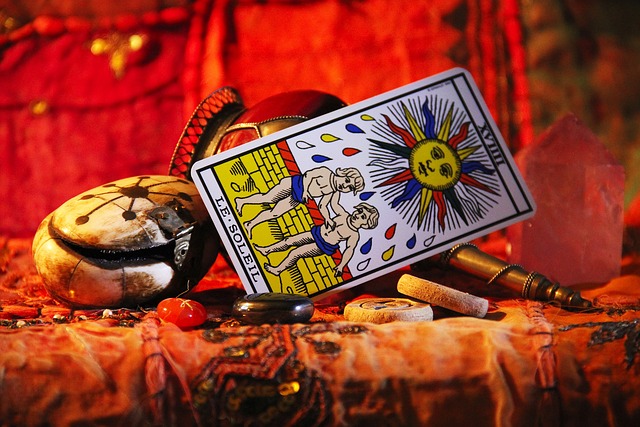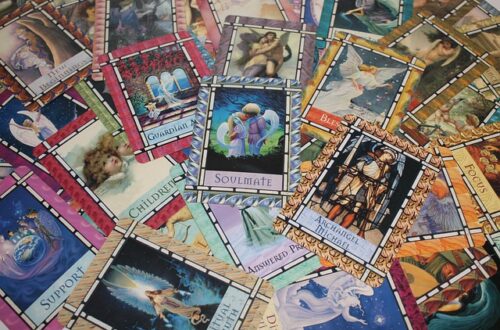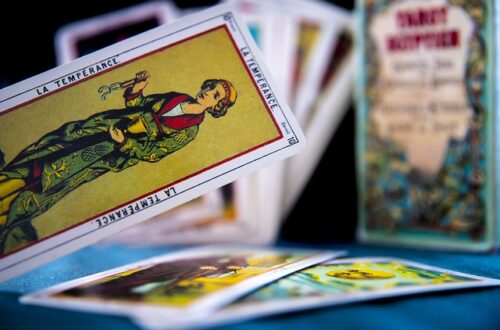
Three-Card Tarot Spread: Quick and Easy Guidance
Table of Contents
Three-Card Tarot Spread: Quick and Easy Guidance
Introduction
The Three-Card Tarot Spread offers a concise yet profound way to receive guidance. This simple method allows both novices and experienced practitioners to access valuable insights. In this article, we will explore the various aspects of the Three-Card Spread, its significance, and how to interpret the cards effectively. Through this exploration, readers will gain the confidence to use this spread for personal and intuitive readings.
The Basics of Tarot
Understanding Tarot Cards
Before delving into the Three-Card Spread, it’s essential to understand what tarot cards are. A standard tarot deck consists of 78 cards, divided into the Major Arcana and Minor Arcana. The Major Arcana features 22 cards that depict significant life events and spiritual lessons. In contrast, the Minor Arcana consists of 56 cards that represent everyday situations and challenges. This foundational knowledge is crucial for effective tarot reading, as each card contributes to the overall narrative of a spread.
The Role of Intuition
Intuition plays a crucial role in tarot reading. Each card carries a range of meanings, and a reader must tap into their intuitive understanding to convey the message effectively. Many tarot practitioners emphasize the importance of developing this intuition. They suggest that regular practice, along with reflection on personal experiences, enhances one’s ability to interpret the cards. For example, the same card may evoke different feelings and insights based on the context of the question and the reader’s life experiences.
The Structure of the Three-Card Spread
Card Positions
The Three-Card Spread typically involves three positions, each representing a different aspect of a query. The most common layout includes:
- Past: This card reflects previous influences and experiences that shape the current situation.
- Present: The second card provides insights into the current circumstances and challenges.
- Future: This card offers guidance on potential outcomes or directions based on the current path.
Choosing the Right Cards
Choosing the right cards for the Three-Card Spread involves a blend of intention and chance. Some practitioners shuffle the deck while focusing on their question, while others prefer a more ritualistic approach. It’s important to feel a connection to the cards. This connection can enhance the reading’s effectiveness and relevance. For instance, someone may feel particularly drawn to certain cards due to their vibrant imagery or personal symbolism, which can influence their interpretation.
Interpreting the Cards
Understanding Individual Card Meanings
Each card carries its unique symbolism and meaning. For example, the Fool represents new beginnings and potential, while the Death card symbolizes transformation and endings. Understanding the individual meanings of the cards is crucial. Moreover, one must consider the context of the question posed during the reading. When interpreting the Fool card, a reader might explore the idea of embarking on a new journey, while the Death card could prompt reflections on letting go of old habits to embrace growth.
Using Intuition in Interpretation
When interpreting the cards, intuition is paramount. While there are established meanings for each card, personal insights often add depth to the reading. The connection between the reader and the cards can reveal nuances that standard interpretations may overlook. For example, if a reader pulls the Five of Cups in the Present position, they might feel a personal connection to the card’s themes of grief and loss, leading them to explore how these feelings affect their current situation. Trusting one’s instincts can enhance the reading’s relevance and impact.
Connecting the Cards
Another vital aspect of the Three-Card Spread is the relationship between the cards. Each card’s position influences its meaning, and connections can emerge through visual or thematic links. For instance, if the Past card represents loss (e.g., the Five of Cups), while the Present card signifies struggle (e.g., the Eight of Swords), the reader may conclude that unresolved emotional issues are impacting their current circumstances. Understanding these connections enriches the reading and provides deeper insights into the querent’s journey.
Detailed Examples of Analysis
Example 1: Personal Relationships
Let’s say someone asks, “What do I need to know about my relationship?” The reader draws the following cards:
- Past: The Lovers
- Present: The Two of Swords
- Future: The Star
In this scenario, the Lovers card indicates a strong bond or a significant choice in the past that has shaped the querent’s current relationship dynamics. This card signifies love, harmony, and deep connections, suggesting that the foundation of the relationship is solid. Next, the Two of Swords in the Present position reveals that the querent may be feeling indecisive or facing a conflict in their relationship. This card often symbolizes a stalemate or a need for clarity in communication. Finally, the Star card points to hope, healing, and a positive outlook for the future. This card suggests that the querent can overcome current challenges by finding balance and nurturing their relationship.
Example 2: Career Path
Consider a querent asking, “What should I focus on in my career?” The drawn cards are:
- Past: The Hermit
- Present: The Ace of Wands
- Future: The Ten of Pentacles
Here, the Hermit in the Past position indicates a period of introspection and self-discovery. The querent may have spent time evaluating their career choices and contemplating their true passions. Moving to the Present position, the Ace of Wands symbolizes new beginnings, inspiration, and creative potential. This card suggests that the querent is on the brink of an exciting opportunity or a new project that aligns with their passions. Finally, the Ten of Pentacles in the Future position signifies long-term success, stability, and financial security. This card indicates that the querent’s efforts in pursuing their creative aspirations will ultimately lead to lasting fulfillment and success in their career.
Example 3: Personal Growth
In a reading focused on self-improvement, a querent asks, “What do I need to work on for personal growth?” The cards drawn are:
- Past: The Tower
- Present: The Strength
- Future: The Fool
In this reading, the Tower represents a significant upheaval or realization in the past that led to personal growth. The querent may have experienced a sudden change or revelation that prompted them to reevaluate their beliefs and habits. The Strength card in the Present position signifies inner courage, resilience, and the ability to overcome challenges. This card encourages the querent to embrace their inner strength and tackle personal obstacles with confidence. Finally, the Fool in the Future position represents new beginnings and opportunities for exploration. This card suggests that by addressing current challenges and embracing their strength, the querent will find the courage to embark on new journeys and experiences that promote growth and self-discovery.
Practical Applications of the Three-Card Spread
Daily Guidance
The Three-Card Spread is excellent for daily guidance. Practitioners often use it to reflect on personal situations. For example, a reader may ask, “What should I focus on today?” This approach allows them to consider their past influences, present circumstances, and future aspirations. By doing so, individuals can make more informed decisions. This daily practice encourages mindfulness and a deeper connection to one’s inner self.
Decision-Making
Another application of the Three-Card Spread is in decision-making. When faced with choices, a reader might ask, “What are the consequences of each option?” By interpreting the cards in relation to each choice, they can identify potential outcomes and weigh the pros and cons more effectively. This method fosters a sense of clarity and can alleviate feelings of uncertainty.
Self-Reflection
Additionally, the Three-Card Spread serves as a tool for self-reflection. Many individuals use tarot to explore their feelings and thoughts. A question like “What do I need to understand about myself?” can yield valuable insights through this spread. By examining the cards’ messages, readers can foster personal growth and self-awareness. Journaling about the insights gained from these readings can further enhance the process of self-discovery.
Tips for Effective Readings
Create a Conducive Environment
Setting the right atmosphere is essential for effective readings. A quiet space with minimal distractions encourages focus and intuition. Consider using candles, crystals, or soothing music to enhance the ambiance. Furthermore, creating a personal ritual around your readings can help ground your energy and intentions. Such rituals might include lighting a candle or setting an intention before starting the reading.
Stay Open-Minded
Maintaining an open mind during readings is crucial. Sometimes, the messages from the cards may challenge your beliefs or expectations. Embrace the insights, even if they are uncomfortable. Remember, the goal is to gain clarity and guidance, not to validate preconceived notions. Keeping a non-judgmental attitude toward the messages received can lead to profound revelations and insights.
Practice Regularly
Finally, regular practice is vital to mastering the Three-Card Spread. The more you read, the more comfortable you will become with interpreting the cards. Consider keeping a tarot journal to document your readings and reflections. This practice can enhance your skills and deepen your understanding of the cards over time. Additionally, reviewing past readings can reveal patterns and themes in your life that may require attention.
Conclusion
The Three-Card Tarot Spread offers a straightforward yet powerful way to gain insight and guidance. By understanding the basics of tarot, the structure of the spread, and the techniques for interpretation, anyone can use this method effectively. As you practice, remember that tarot is a personal journey. Trust your intuition, stay open-minded, and enjoy the process of exploration and self-discovery.
Bibliography
- Pollack, Rachel. 78 Degrees of Wisdom: A Tarot Journey to Self-Awareness. 1st ed. New York: HarperCollins, 1980. ISBN: 978-0062505862.
- Greer, Rachel. The Tarot: History, Symbolism, and Divination. 1st ed. New York: HarperCollins, 2000. ISBN: 978-0062510217.
- Simmons, Lynn. Tarot for a New Generation. 1st ed. San Francisco: Chronicle Books, 2003. ISBN: 978-0811840060.
- Hajo, Susan. Tarot Made Easy. 1st ed. New York: Sterling Publishing, 2004. ISBN: 978-1402724222.
- Jodorowsky, Alejandro, and Marianne Costa. The Way of Tarot: The Spiritual Teacher in the Cards. 1st ed. New York: TarcherPerigee, 2009. ISBN: 978-1585426980.




